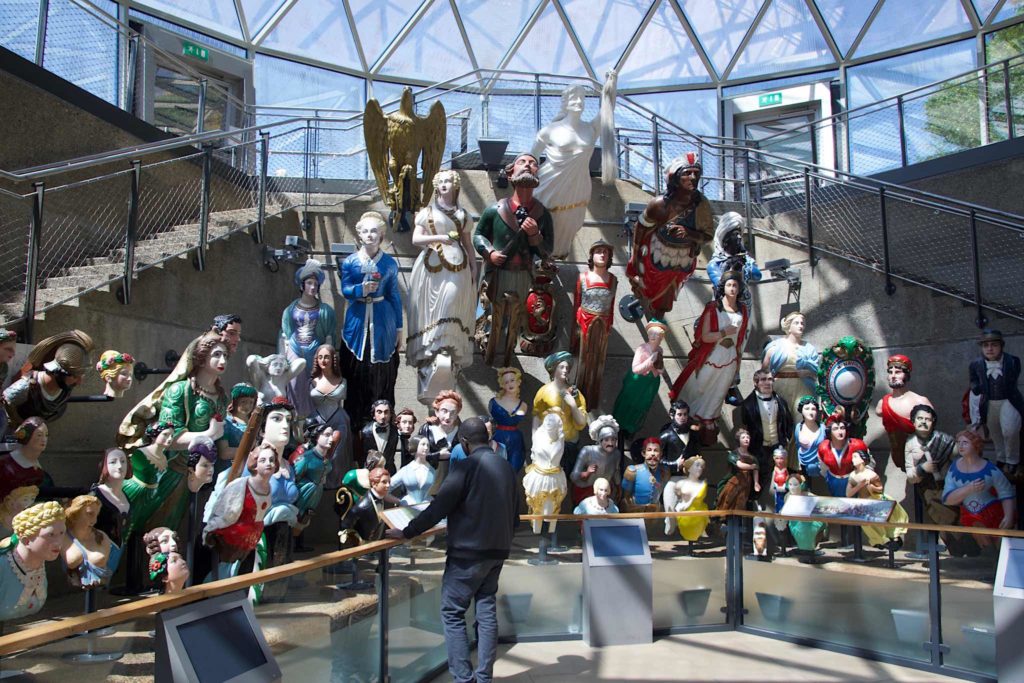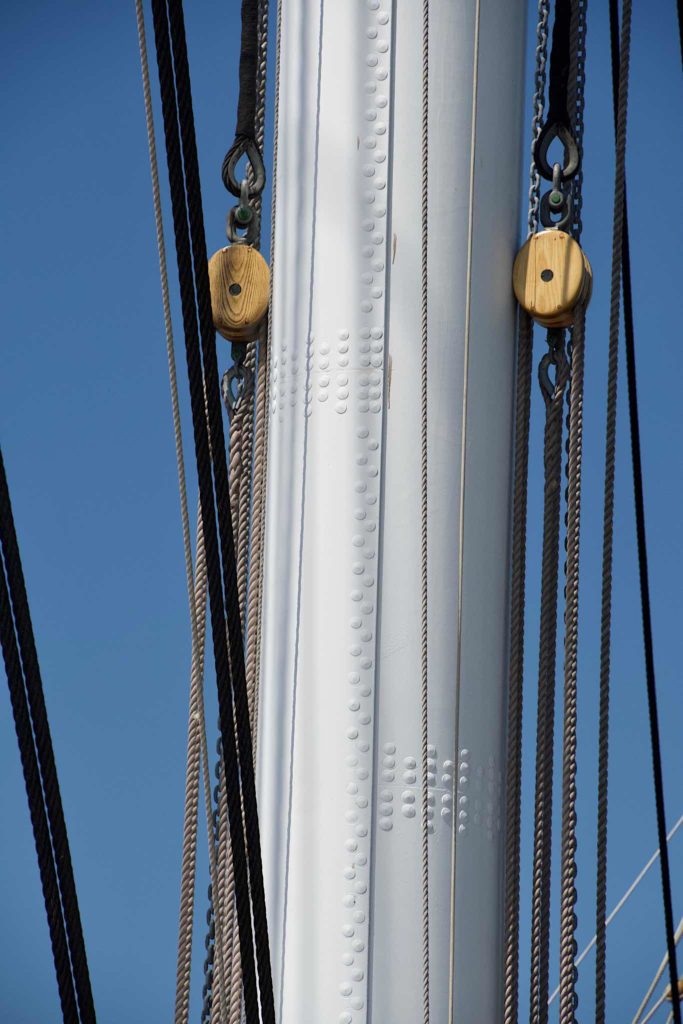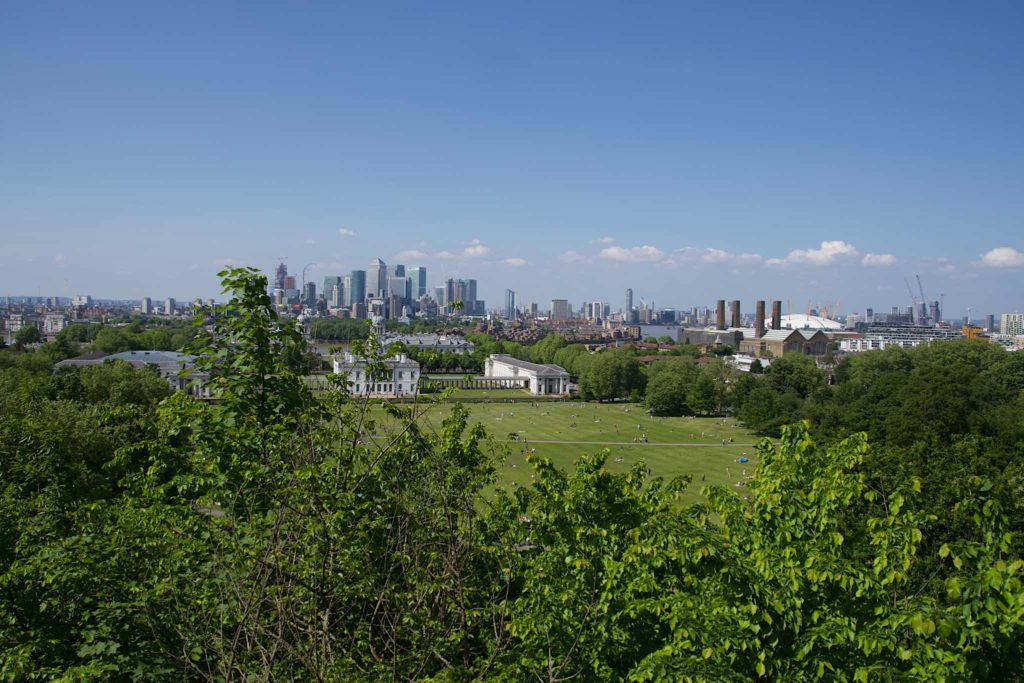When I visited Greenwich last fall, I didn’t plan my trip very well; it was kind of spur of the moment, after starting too late, taking longer than expected at Westminster Abbey, and not being able to get onto the London Eye. I didn’t get down there until about quarter past four — just in time for everything to close.
Still, I liked what I did see, so I decided to go down to Greenwich on Sunday, after doing Portsmouth on Saturday. I had breakfast in a nice little cafe about a block away from the apartment, then headed to the Embankment to pick up a ferry.
I’d hoped for the same guided tour ferry I’d taken last fall, but ended up on a water bus. No matter; the weather was sunny, and the views were nice as we motored down the Thames.





After the better part of an hour, I arrived in Greenwich. The tea clipper Cutty Sark is visible from the river, and I walked the short distance to the museum, and bought a combined ticket for Cutty Sark and the Royal Observatory.
Cutty Sark is in dry dock — the British don’t seem to like to keep their ships in the water. Snark aside, it helps to preserve the ship. In the case of Cutty Sark, the ship is in a cradle of supports that supports the ship by her bilges. This keeps the ship’s weight off her keel, and in fact, the ship is supported about 3 meters off the floor of the drydock. You can go underneath and see the fine lines of her underwater body.
Halfway up the flanks of the ship, a glass roof encircles the sides of the ship; presumably this keeps the hull dry and avoids rot. What this means is that the masts, rigging, and top deck are open to the air, but the hull of the ship is protected from the weather.
You enter the ship museum, buy your ticket, then follow a passage that takes you through a hole in the side into the ship’s hold. This is where the cargo was stored. The ship’s cast iron framework is visible, and they’ve painted it in such a way that you can see what’s original and what’s replacement. The hold contains a number of exhibits.
From the hold, you go up the companion way to the tween decks – this is where the crew was quartered during the very earliest voyages, and later became more cargo storage. From there, there was another set of stairs up to the main deck, where we had a somewhat hokey guided tour.









After the tour, I took a quick look through the captain’s quarters, and the deckhouse containing the crew’s quarters. After that, I left the ship, and went down into the drydock, to see her copper-clad bottom, and a collection of figureheads that had come from a number of different ships.
Then it was time to poke around the town a little bit, and then through the park and up the hill to the Royal Observatory, founded by Charles II. The observations made at the Observatory helped solve the Longitude Problem.
When you’re navigating out of sight of land, as England’s navy and merchant fleets did, it’s very important to know exactly where you are on the globe. Determining your position north or south of the equator — your latitude — is relatively simple; you simply measure how high the sun rises at noon above the horizon. Figuring out your east/west position is much harder. One way is to measure the position of the moon vis á vis the stars, and the detailed observations from the Observatory were collected into reference books used for celestial navigation.
The other way is to realize that for every 15° of longitude east or west, you gain or lose an hour of time. (This is why different parts of the world have different time zones). By comparing your local time with the time at your reference latitude, you can figure out how far east or west of your reference latitude you are. This requires extremely accurate clocks, capable of being carried on board ships, that won’t gain or lose time due to motion of the ship or changes in temperature.
The British Government passed a law providing for a prize to the first person to create a sufficiently accurate clock, which could be used for onboard navigation. The prize was won by a clockmaker named John Harrison in 1773.
Because of the work done at the Observatory, the English adopted the longitude of Greenwich as the reference longitude, and this was ratified by international convention in 1884; this is the Prime Meridian, 0° Longitude, and it runs right through the Observatory grounds. You can straddle a marker in the cobbles, and be in both the East and West Hemispheres.








After the Observatory, it was time for dinner. I’d been advised by one of my co-workers that I had to have a Sunday Roast Dinner at a pub. On the way up to the Observatory, I’d noted a couple of likely candidates, and when I came back down the hill, I ended up with this:
After dinner, I poked around a few more shops, walked through the grounds of the Naval College, and then got to the ticket office just in time for the last sightseeing trip back to Westminster. By this time the tide was high, and we had a good view of the Royal Naval College as we started back.





Overall, it was a really nice day, aside from one thing. I woke up that morning with the characteristic feeling in the back of my throat that told me I was going down with a cold. I managed to get through the day OK, but by the time I got back to the apartment, I took a quick look at the pictures, and fell into bed, despite the fact it was still daylight. By the following morning, I was in drippy mode, and really wasn’t in much shape to do anything outside of work until the following Saturday, which will be the subject of my next post.

